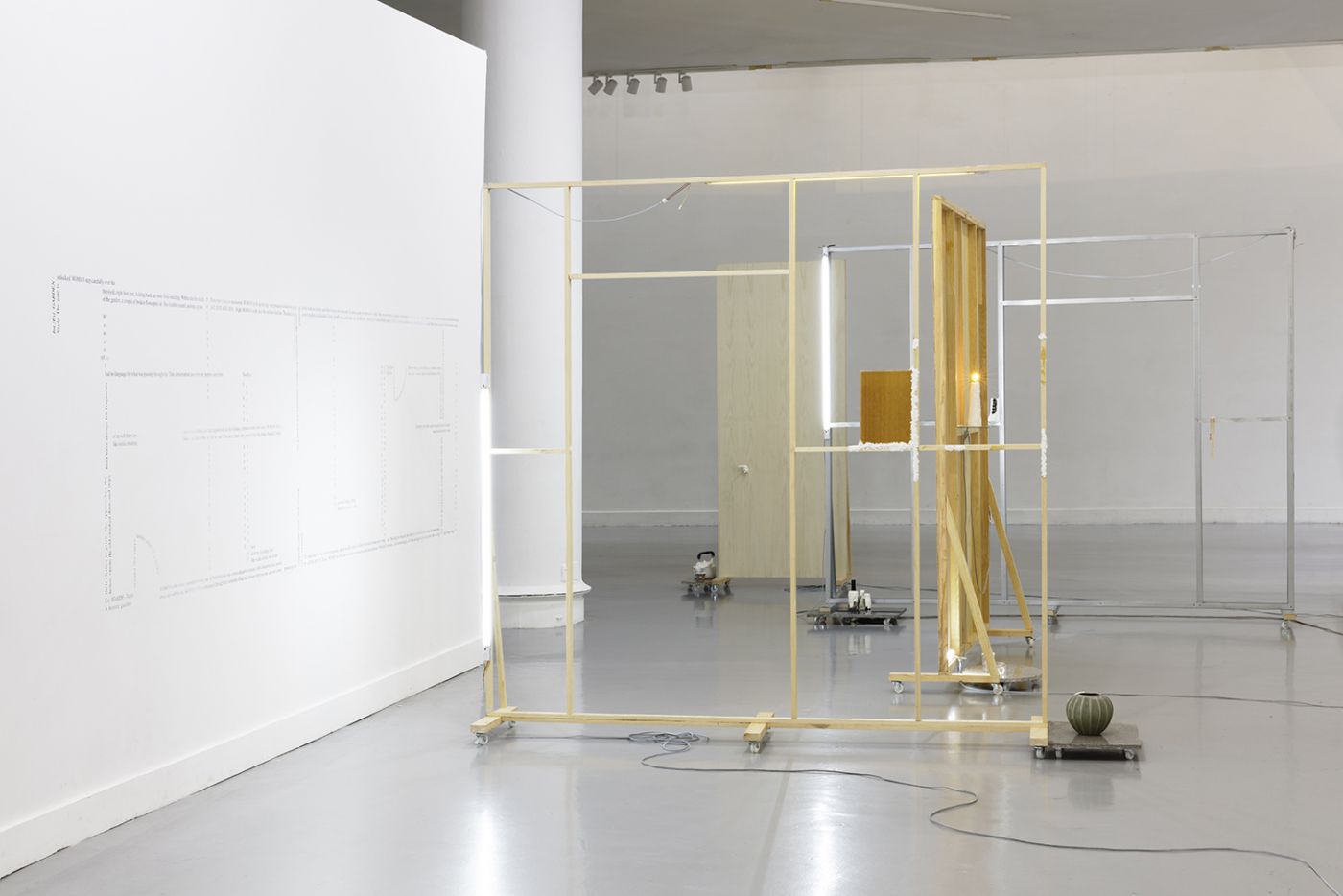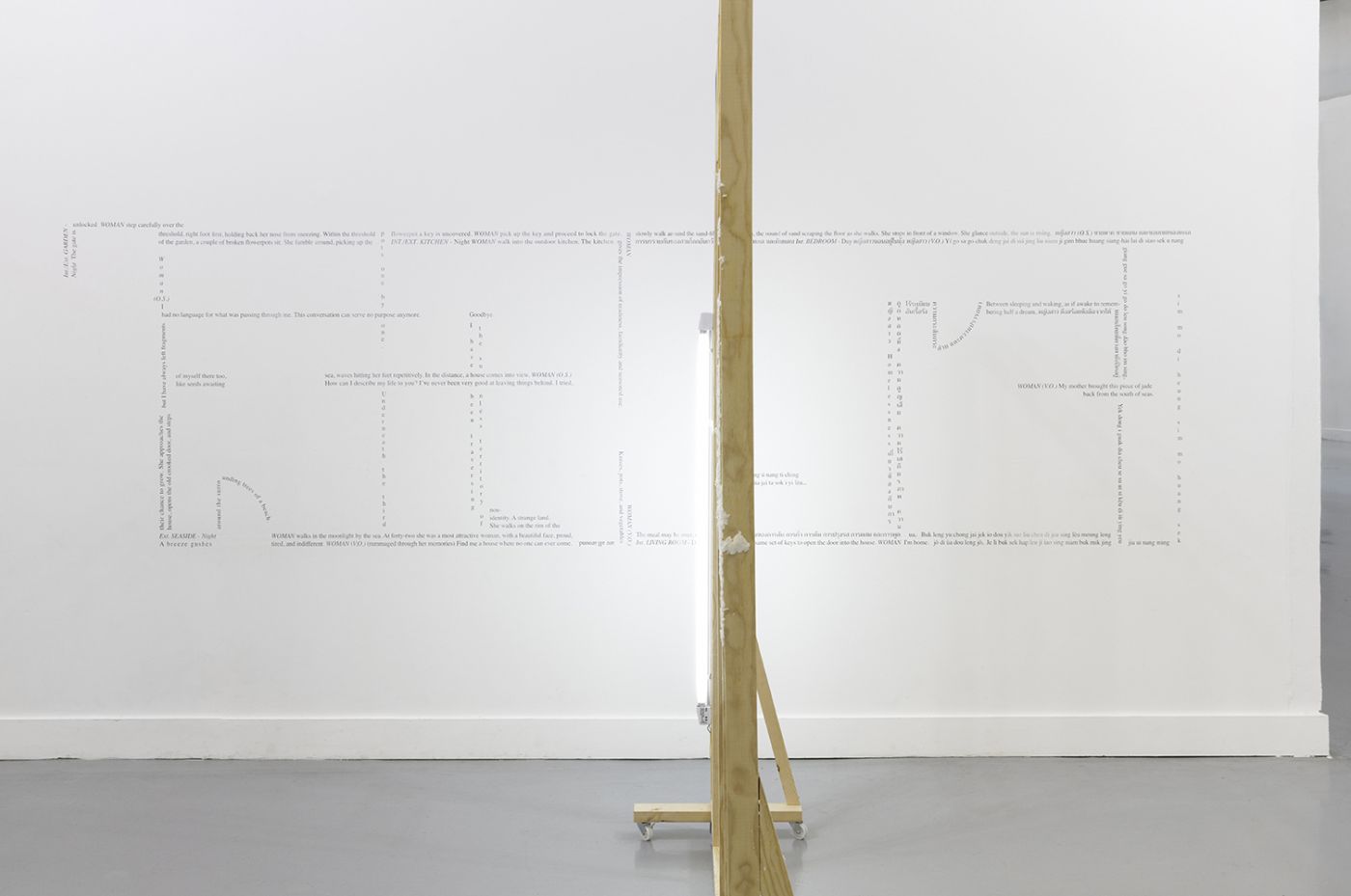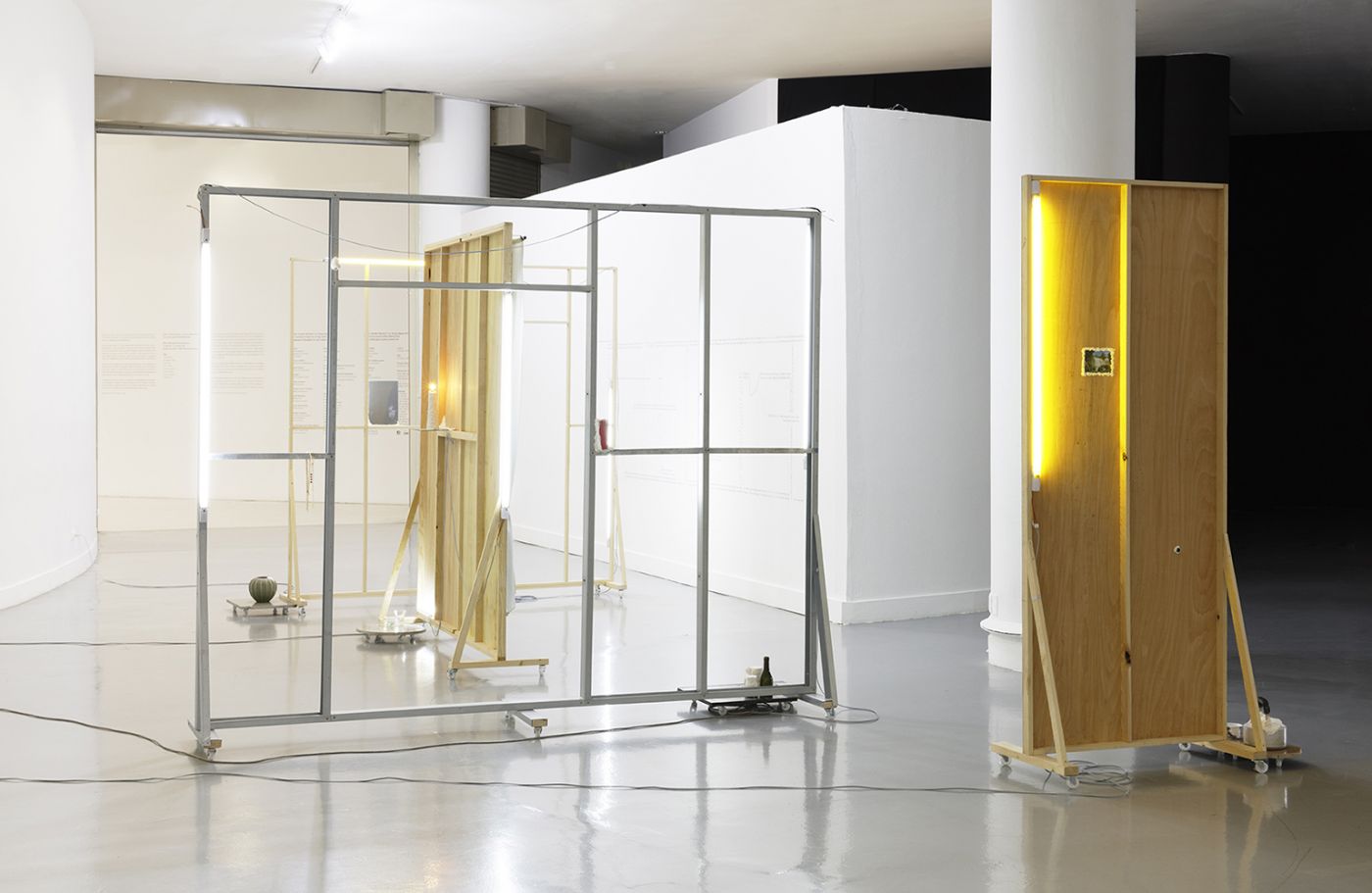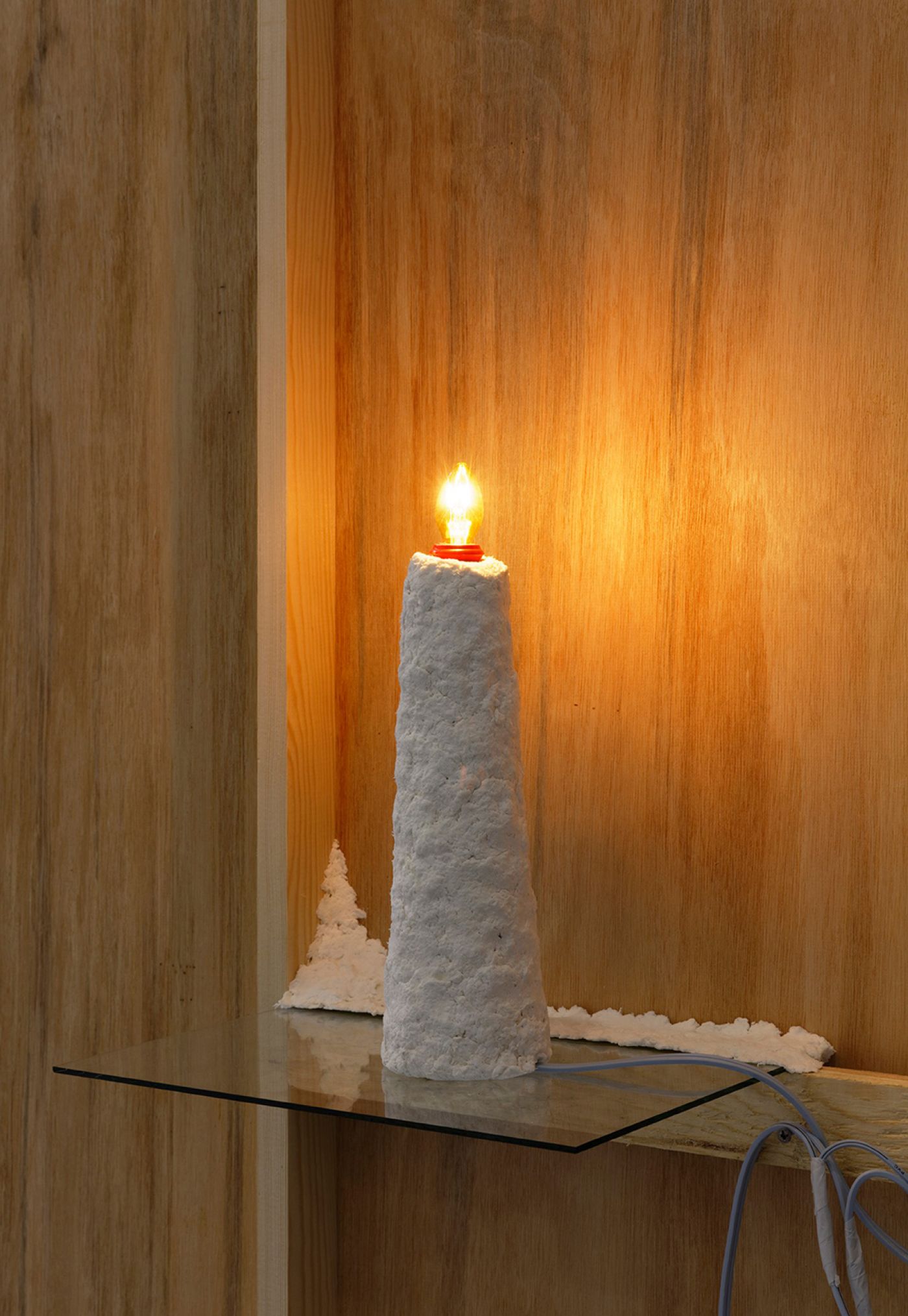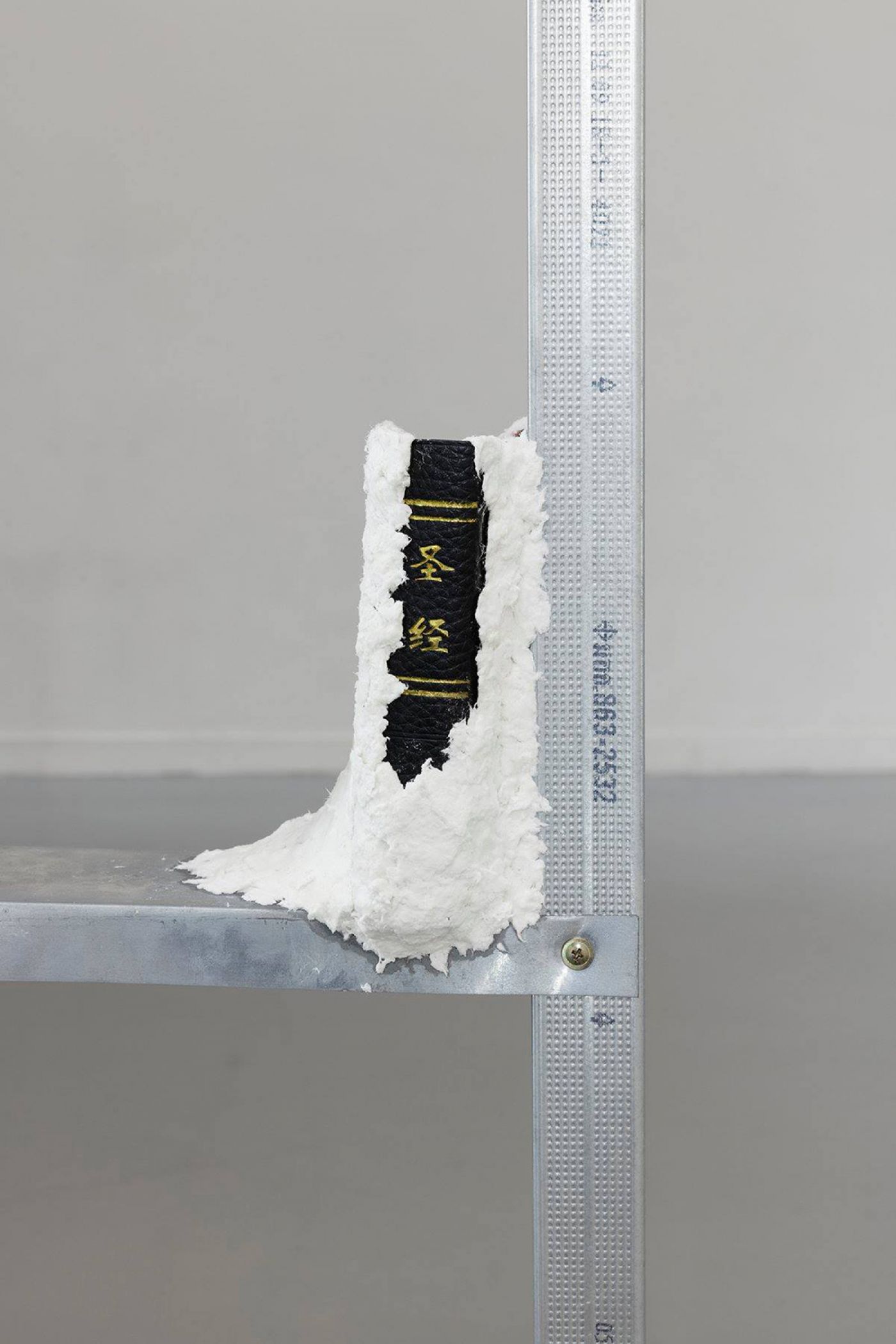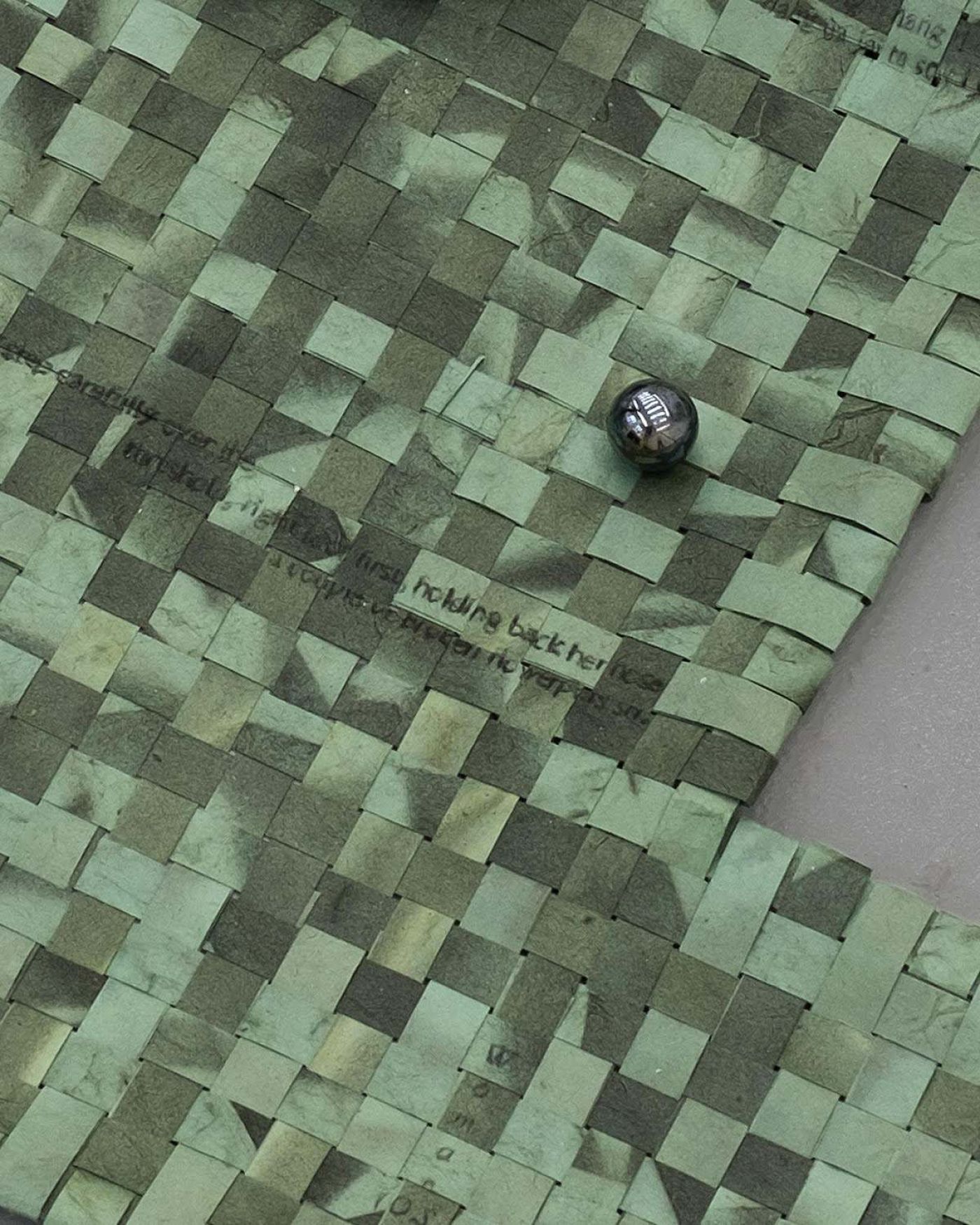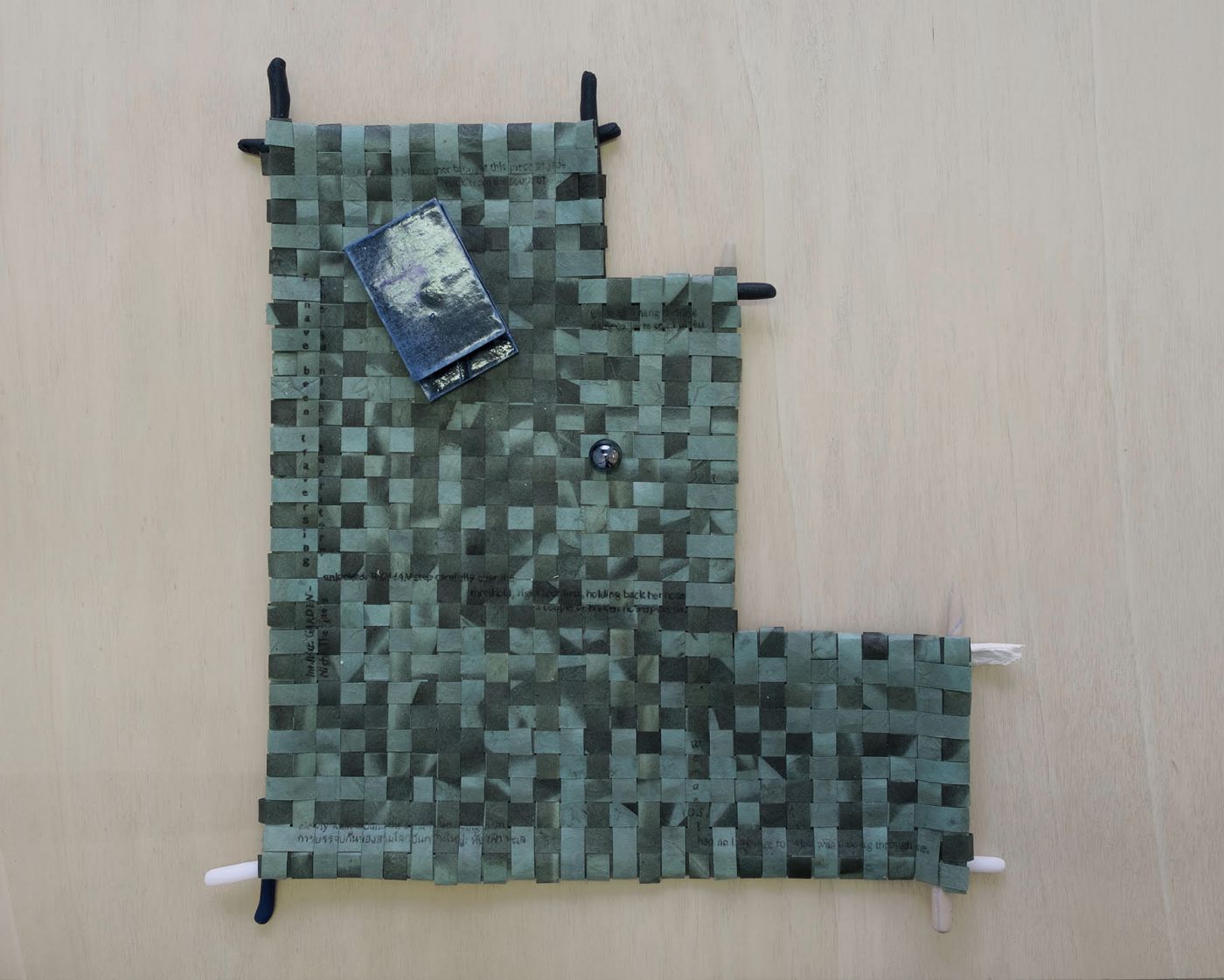Pam Virada
Liste Year
Year of Birth
Country of Birth
Presented by
2020
1993
Thailand
Nova Contemporary
Pam Virada (b. 1993, Bangkok) is interested in the contextualized notions that lie between the realms of architectural space, memory, as well as mnemonic devices. Drawn into the creations of oxymorons, she often explores the concepts of personal and collective memory, colliding subjective realms with physical spaces, or the circumstances in between placement and displacement.
Previous works by Pam Virada:
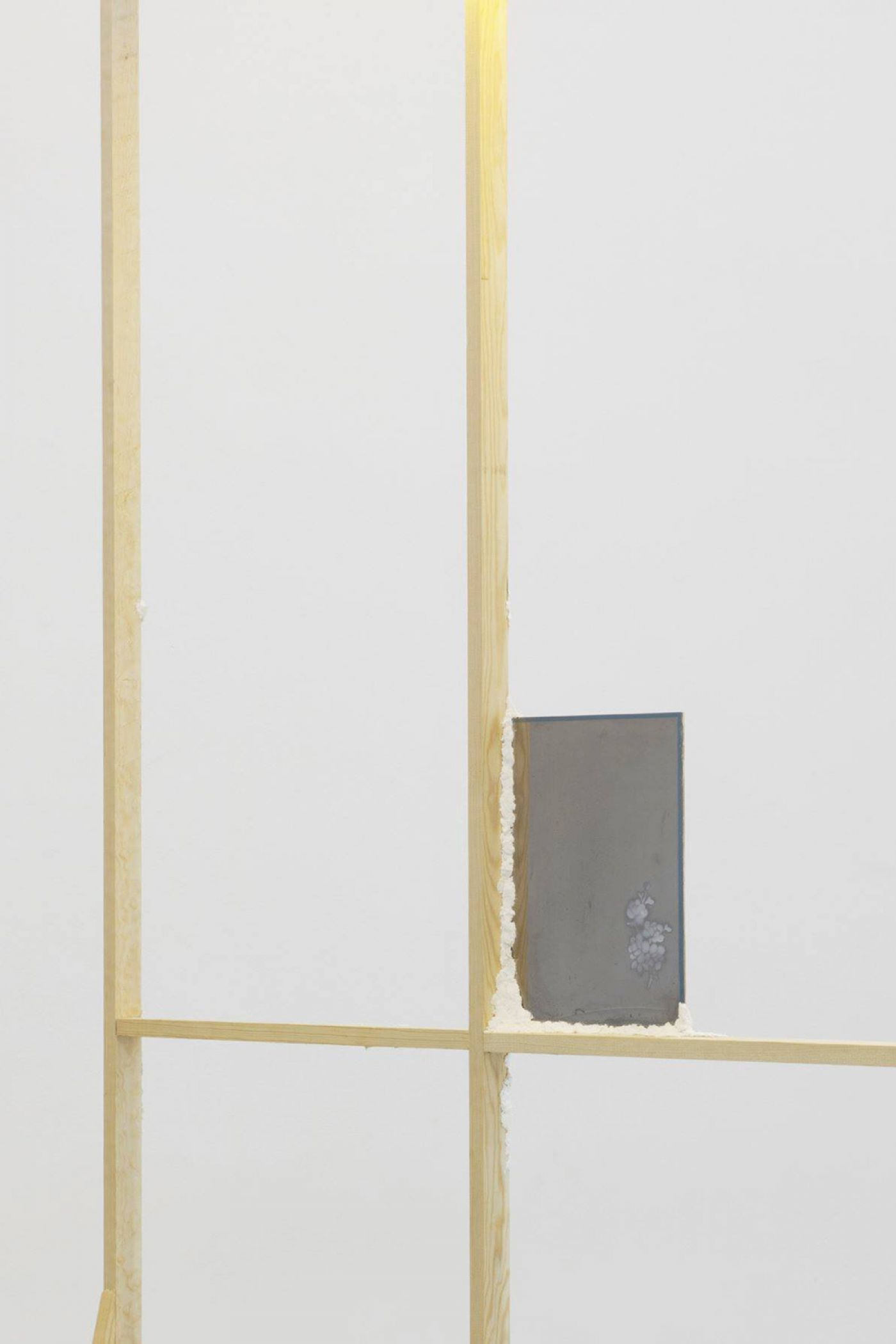
The artist's previous work, find me a house (2019), Virada structures the movable walls to create a housing archetype's mise-en-scene, which modeled after the mainland Chinese immigrant's homes during the 1940s-the 1960s. As portrayed in the film sets of Edward Yang's and Hou Hsiao-Hsien's Taiwanese films, the Artist wants to reflect the diasporic living space of her grandmother who fled from China to Thailand during World War II. By re-appropriating the space alongside the objects collected from her grandmother's house, Virada creates the new space of observing and experiencing; the viewers will be able to walk through the open structure and experience the unsettling, the drifting, the powerless through the constructed, seemingly-fragile architectural spatiality.
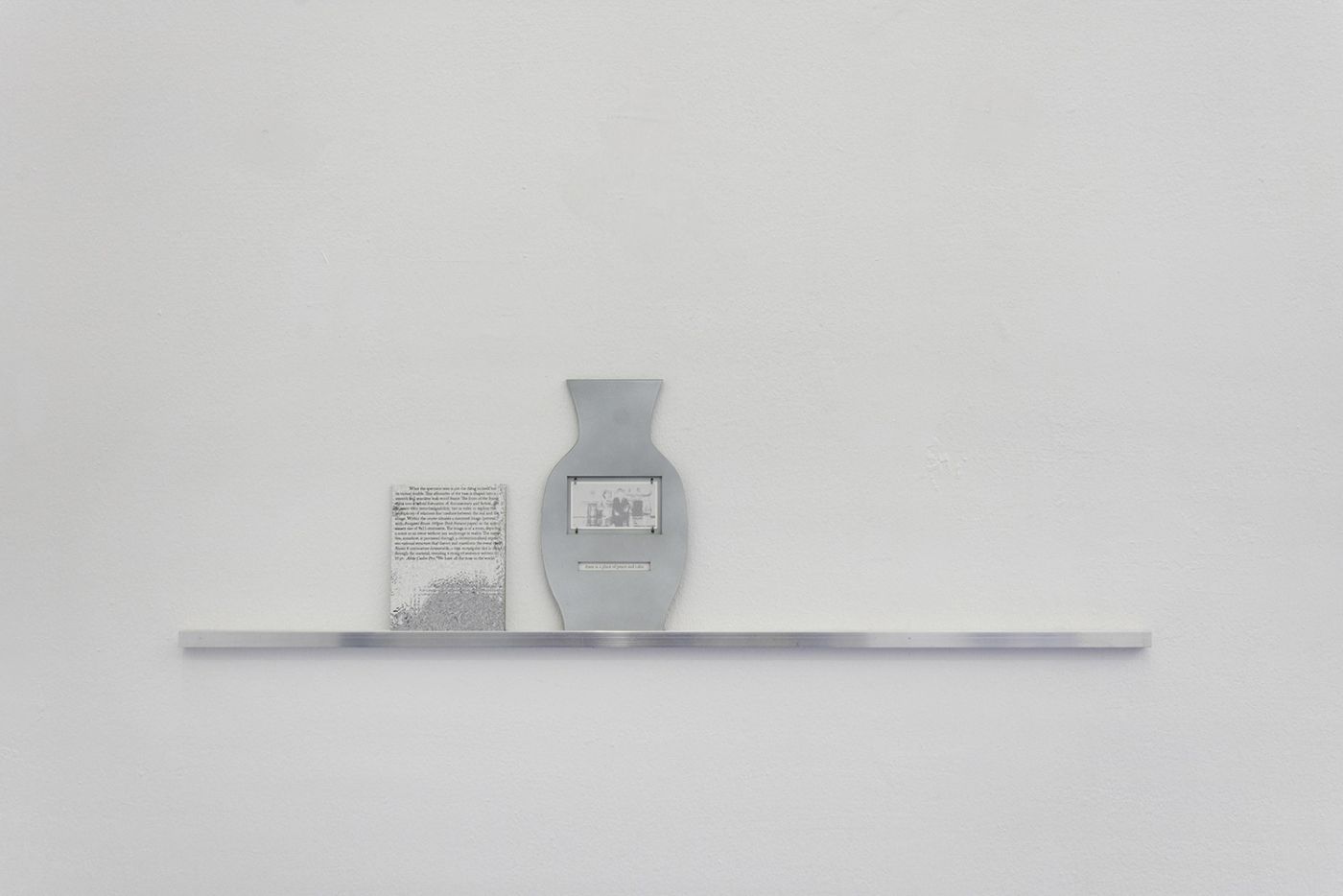
'Can dreams become actual plans, or are they aspirations that should remain untouched, so that there's always something to reach for?'
An excerpt from Of Mice & Men, John Steinbeck

Sitting on a shelf, the text on the left describes the artist’s utopian view of how the unrealized work should become. On the right lies the realized work itself, a framed image of a family picture taken from the scene in A City of Sadness (1989) directed by Hou Hsiao-Hsien. By utilizing the same vase existing within the framed image as the framing device itself, the image is domesticated and re-enacted. This re-enactment maintains the image of the real, but it also makes it unreal—a representation of itself.
With the bold and depth, Pam Virada creates new works for Liste Showtime to discuss the conception of home and to document the mental state of the Chinese diaspora.
Literally structured, Pam Virada’s Sea, Room, Jade, could be seen as her subversive explorations on the notions of the fixation, categorization, and origination. Virada animates the enigmatic by uncannily juxtaposing the disparate objects. The temporal tactile physicality in the mediums suggests fragility in life.
Pam Virada is also drawn by how weaving’s suggestive spatiality can subtly lend the arbitrary and liberty to the language. The texts written on the weaving mat is from the script she wrote. Her sculptural works entwine references to history of Chinese diaspora, her personal memories, and film through a combination of deftly chosen colors, objects and sentences, which blur the lines between the painting, sculpture and craft. In the end, life becomes tangible in the art form.
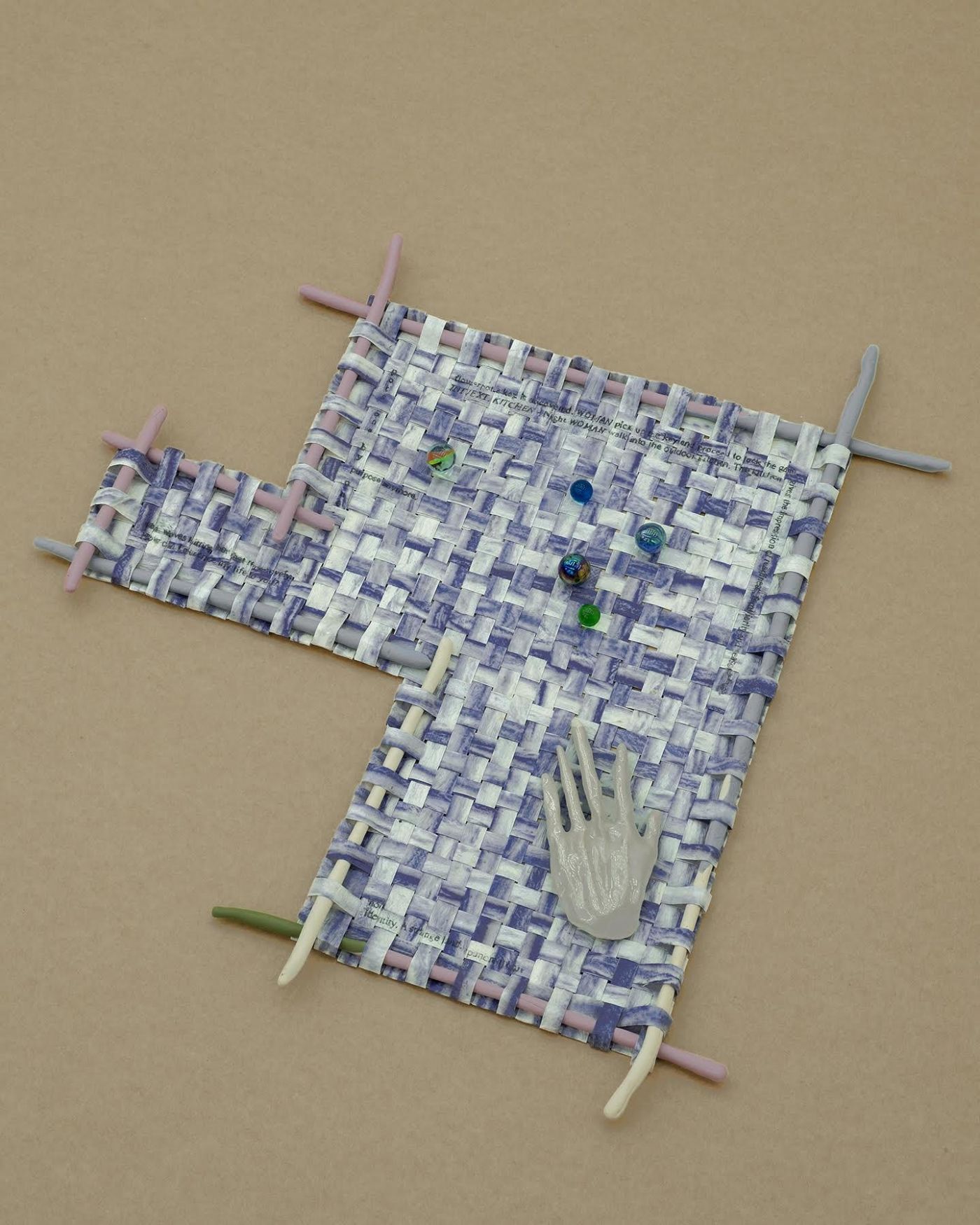

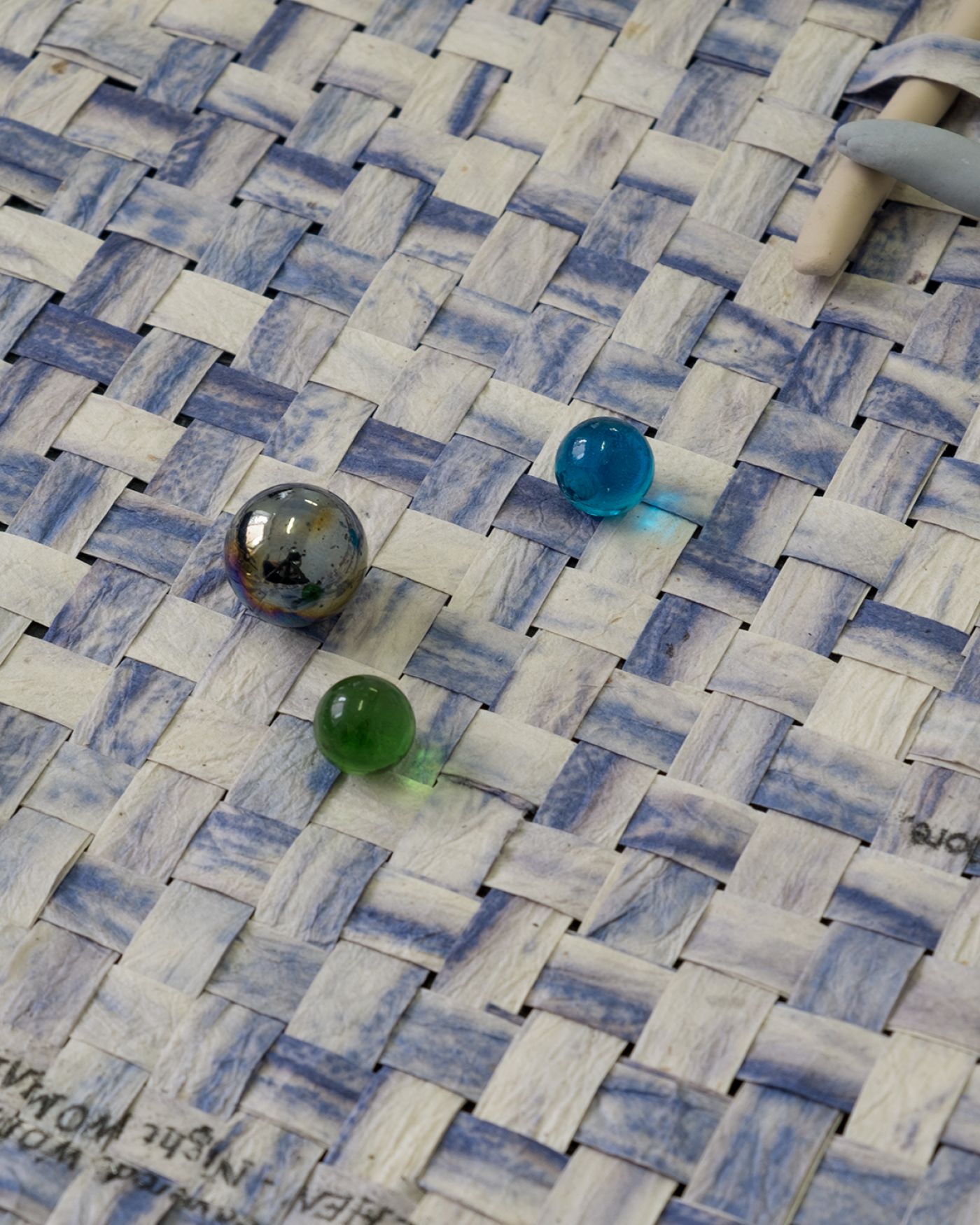
How can I describe my life to you?
Non-identity. A strange land.
Excepts from the script inscribed on Sea, 2020
Virada rethinks the term Thai idiom translated as a mat and a pillow, a common saying for the Thai-Chinese originating from the only objects that the Chinese immigrants would bring with them across the sea. These two objects are then utilized in those days as their mobile shelters for a wandering, nomadic life. If the essence of architecture is its groundedness, the fixed, the permanent, then the mat as a transportable, lightweight house is its very contraposition.
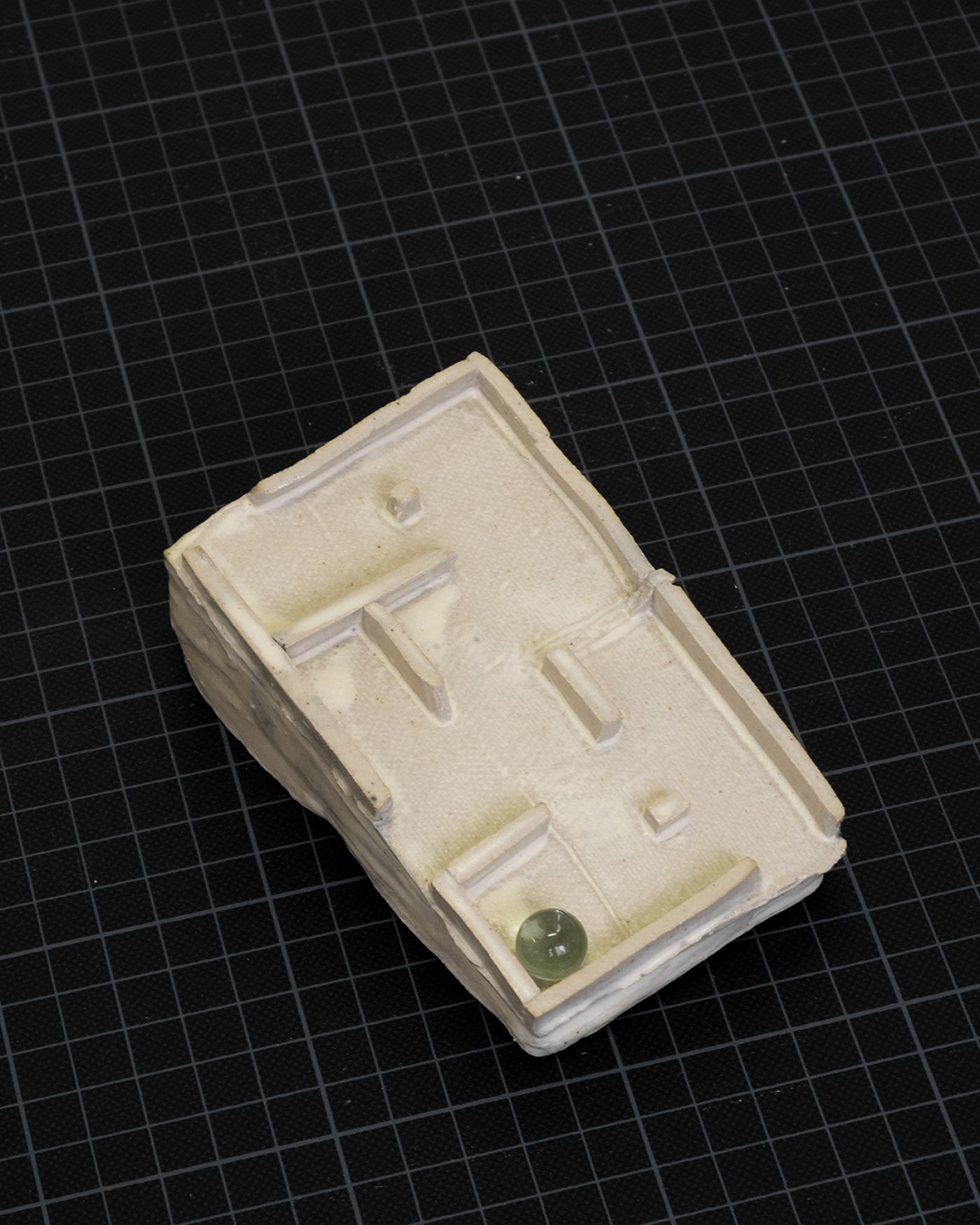
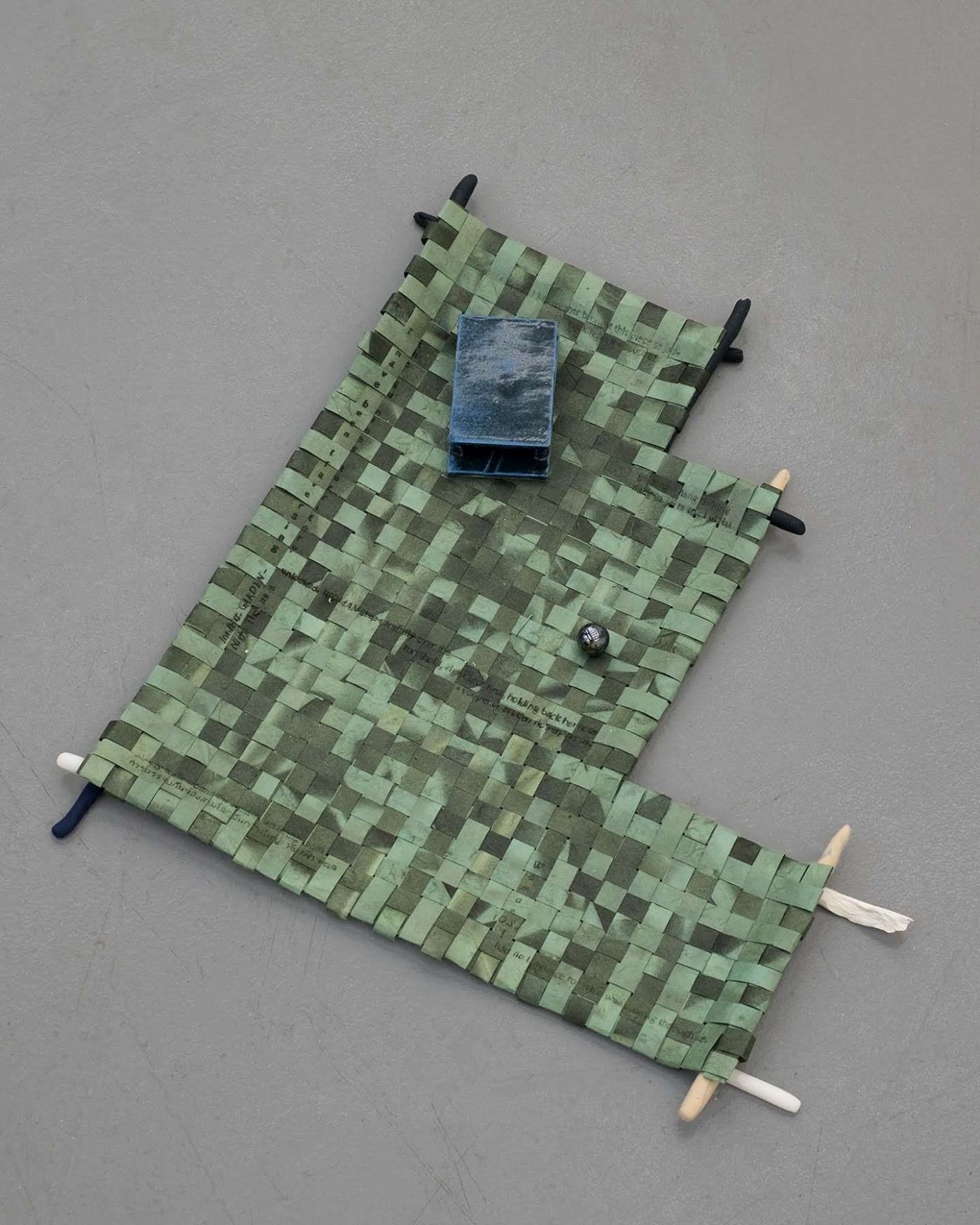
WOMAN (V.O.) My mother brought this piece of jade from the south of the seas.
An except from the script inscribed on Jade, 2020
If we think of the process of weaving and compare the work involved, we will find similarities to building a house despite the difference in scale. Both of them construct a whole from separate parts that retain their identity, a manner of proceeding, fundamentally different from working metal, for instance, or clay, where elements absorb itself into an entity.
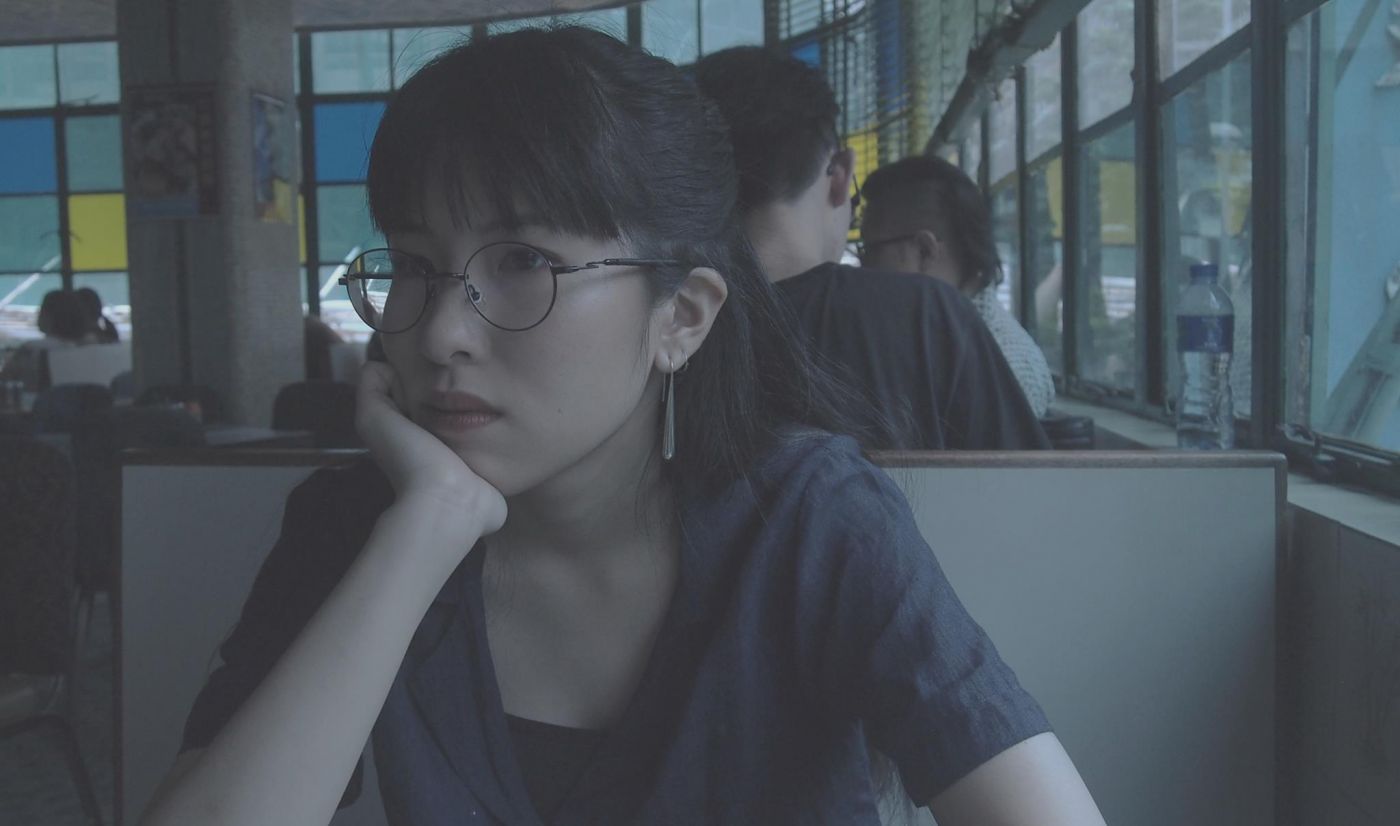
Pam Virada (b. 1993, Bangkok) lives and works in Amsterdam.
The artist’s selected exhibitions: Praxis Makes Perfect, Bangkok Art & Culture Centre (BACC), Bangkok; appearing unannounced, part of Painnale 2018, Rirkrit Tiravanija’s studio, Chiangmai; A Way of Seeing: Reading SEA photobook and self-publishing, PonDing, Taipei; 454/278-281, part of Bangkok Biennial 2018, Bangkok; Multiple Planes, part of PhotoBangkok 2018, Bangkok Art & Culture Centre (BACC), Bangkok; engineered ruin, TheTip, Frankfurt
